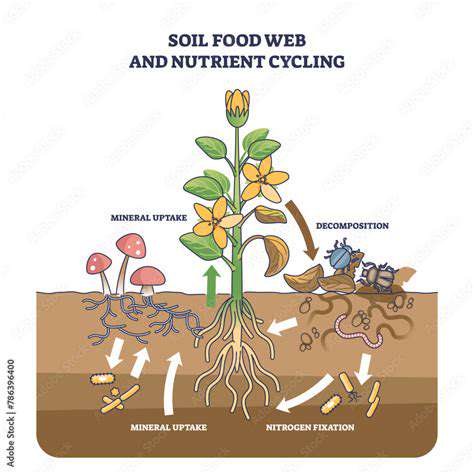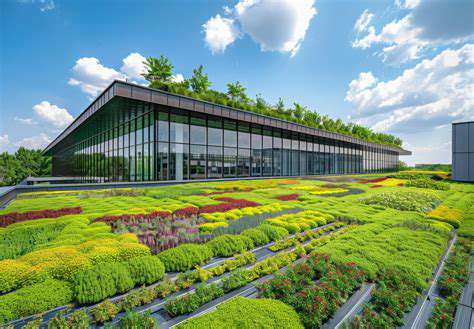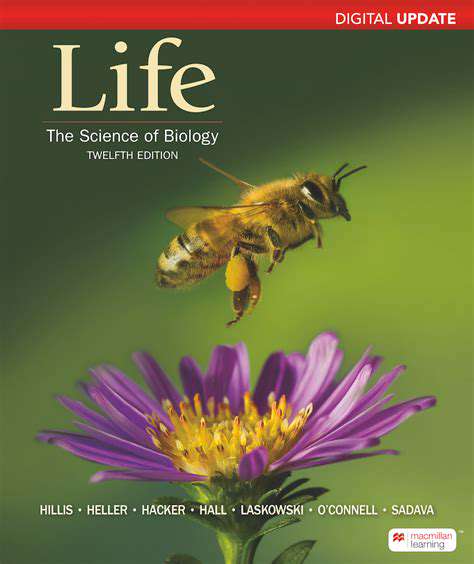Guide to Companion Planting in Your Garden

Understanding the Basics of Companion Planting
Companion planting is an age-old gardening technique that involves strategically choosing plants to grow together. It's based on the idea that certain plants can benefit each other, enhancing growth, yield, and even pest resistance. This approach contrasts with traditional methods, where plants are often spaced far apart, potentially leading to reduced overall productivity.
Understanding the principles behind companion planting can lead to a more productive and sustainable garden. It's a holistic approach to gardening, recognizing the complex interactions between different species and their environments.
Beneficial Plant Combinations for Enhanced Growth
Certain plants, when grown near each other, can support each other's growth. For example, basil and tomatoes are a classic pairing. Basil repels tomato hornworms, a common pest, while tomatoes provide support for the basil's growth. This synergistic relationship can significantly increase the yield of both plants.
Similarly, marigolds are often planted near vegetables as they deter nematodes and other harmful soil organisms. This natural pest control can significantly reduce the need for chemical pesticides.
Repelling Pests with Companion Plants
Some plants possess natural pest-repelling properties. Mint, for example, is known to deter various insects, protecting nearby plants. This natural pest control can save you time and money compared to using harmful chemicals.
Other plants, like garlic, have a strong scent that deters aphids and other pests. Strategic placement of these plants can create a natural barrier against unwanted insects, reducing the need for intervention.
Improving Soil Health Through Companion Planting
Certain plants are known to improve soil health. Legumes, such as beans and peas, are nitrogen fixers, meaning they enrich the soil with nitrogen, a crucial nutrient for plant growth. This natural fertilization can significantly reduce the need for synthetic fertilizers, improving the sustainability of your garden.
Attracting Beneficial Insects
Certain flowers and herbs attract beneficial insects like pollinators. These insects are essential for plant reproduction and can significantly boost your garden's overall health. Planting flowers like sunflowers and lavender can create a welcoming environment for these beneficial insects.
Maximizing Space and Yield
Companion planting allows for more efficient use of space in a garden. By strategically positioning plants that have different growth habits, you can maximize the space available and potentially increase the overall harvest. By carefully considering the height and spread of plants, you can create a more compact and productive layout.
Considerations for Choosing Companion Plants
While companion planting offers numerous benefits, it's essential to research the specific needs of each plant and consider their compatibility. Some plants may compete for resources, hindering the growth of others. Thorough research is essential for ensuring a successful and productive companion planting strategy. Careful consideration of plant sizes and growth habits is essential to prevent overcrowding and ensure each plant receives the necessary space and resources.
Attracting Beneficial Insects and Repelling Pests
Attracting Beneficial Insects
Encouraging the presence of beneficial insects like ladybugs, lacewings, and parasitic wasps is crucial for a thriving garden. These insects are natural predators of many garden pests, reducing the need for harmful pesticides. Creating habitats that attract them involves providing a diverse range of flowering plants, especially those rich in pollen and nectar. A mix of herbs and flowers will provide a constant food source and shelter for these helpful insects, ensuring a healthy population to control common garden pests. This strategy fosters a balanced ecosystem within your garden, minimizing the need for chemical interventions.
Beyond the flowers, consider providing water sources, such as shallow dishes filled with pebbles or a small birdbath. These water sources will attract beneficial insects and provide them with the hydration they need to thrive. Also, avoid using broad-spectrum pesticides, as these can harm beneficial insects as well as the pests they're intended to control. By understanding the life cycles and needs of these insects, you can create a garden environment that encourages their presence and supports a healthy ecosystem.
Repelling Pests with Companion Planting
Companion planting isn't just about attracting beneficial insects; it's also about deterring unwanted pests. Certain plants have natural pest-repelling properties, and strategically placing them near susceptible crops can significantly reduce pest infestations. For example, planting strong-smelling herbs like basil, mint, or chives near vegetables like tomatoes or peppers can deter tomato hornworms and other common pests. This approach utilizes the natural defenses of plants to create a less inviting environment for pests, reducing the need for chemical interventions and promoting a more sustainable gardening practice. Careful selection and placement of these companion plants are essential for maximizing their deterrent effect.
Another effective strategy involves using plants that have a strong aroma or a repellent compound. These plants create a barrier against pests, preventing them from feeding on the desired crops. Consider planting marigolds around your vegetable patch, as they are known to deter nematodes and other soil-borne pests. This thoughtful approach to companion planting can significantly reduce the need for pesticides, promoting a healthier and more sustainable garden.
Understanding the specific needs of different plants and pests allows for strategic companion planting. Researching which plants repel specific pests and strategically placing them near the vulnerable plants can greatly reduce pest pressure. This natural approach to pest control allows for a more harmonious relationship between the garden and the environment, promoting a healthy and vibrant ecosystem. It's a valuable strategy for reducing the use of harmful pesticides and promoting sustainable gardening practices.
Optimizing Soil Health and Nutrient Cycling

Improving Soil Structure
Healthy soil structure is crucial for optimal plant growth. It allows for proper water infiltration and aeration, which are essential for root development and nutrient uptake. Compacted soil restricts root growth, hindering nutrient absorption and overall plant health. Improving soil structure involves practices like adding organic matter, minimizing tillage, and incorporating cover crops. These methods enhance soil aggregation, improving its ability to hold water and air.
Organic matter, such as compost and manure, plays a vital role in creating a well-structured soil. It improves soil porosity, allowing water to penetrate easily and preventing waterlogging. This enhanced water retention capacity benefits plants during dry periods, while the improved aeration supports healthy root systems.
Enhancing Soil Biology
A vibrant soil ecosystem, teeming with beneficial microorganisms, is key to nutrient cycling and plant health. These organisms decompose organic matter, releasing essential nutrients into the soil for plant uptake. Microbial activity is essential for nutrient availability and overall soil fertility.
Encouraging a diverse population of beneficial microbes can be achieved through practices like composting, cover cropping, and avoiding excessive pesticide use. These actions create a favorable environment for microorganisms to thrive, leading to a more fertile and productive soil.
Managing Soil Nutrients
Maintaining a balanced nutrient supply is vital for plant growth and overall soil health. Nutrient imbalances can lead to deficiencies or excesses, impacting plant development and yield. Understanding the specific nutrient needs of the plants being grown is essential for creating a tailored fertilization strategy.
Regular soil testing helps determine nutrient levels and identify any deficiencies or imbalances. This data enables the application of targeted fertilizers to correct any deficiencies and maintain optimal nutrient levels in the soil, supporting plant growth and health. Using organic fertilizers is a sustainable approach to replenish nutrients, promoting a healthy soil ecosystem and plant development.
Optimizing Water Management
Proper water management is essential for healthy soil and plant growth. Excessive water can lead to waterlogging, hindering oxygen availability for roots and potentially causing root rot. Conversely, insufficient water can lead to drought stress and nutrient deficiencies.
Implementing strategies like mulching and rainwater harvesting can help regulate water levels in the soil. These practices help conserve soil moisture, reduce erosion, and promote healthy plant growth. Effective water management prevents both waterlogging and drought stress, creating optimal conditions for root development and nutrient uptake.
Utilizing Cover Crops
Cover crops play a significant role in improving soil health and nutrient cycling. They help prevent erosion, suppress weeds, and add organic matter to the soil. Cover crops effectively improve soil structure, enhancing water infiltration and aeration. This improved soil structure benefits plant growth and promotes a healthy soil ecosystem.
Different cover crops offer various benefits, including nitrogen fixation, weed suppression, and erosion control. Choosing the appropriate cover crops for a specific environment can significantly enhance soil health and improve overall crop productivity.
Implementing Sustainable Practices
Sustainable soil management practices are crucial for long-term soil health and productivity. These practices prioritize minimizing environmental impact and maximizing soil fertility. Reduced tillage and no-till farming methods help preserve soil structure and reduce erosion.
Integrating cover crops and crop rotation schemes further promotes a healthy soil ecosystem. These practices minimize the reliance on synthetic inputs, enhancing soil fertility while minimizing environmental impact. Sustainable soil management ensures long-term productivity and environmental stewardship.
Creating a Thriving Ecosystem with Diverse Plant Choices

Cultivating a Positive Work Environment
A positive and supportive work environment is crucial for fostering a thriving ecosystem. Employees who feel valued and respected are more likely to be engaged and productive. This environment encourages collaboration, innovation, and a sense of shared purpose. Open communication channels, opportunities for professional development, and a culture of trust are all essential components of a positive work environment. Creating this atmosphere requires active listening, clear expectations, and consistent feedback. Leaders should prioritize employee well-being and create a space where everyone feels comfortable taking risks and contributing their best work.
Implementing strategies to recognize and reward employees for their contributions is vital. This can include public acknowledgments, bonuses, or opportunities for advancement. Recognizing individual and team achievements fosters a sense of accomplishment and motivates continued high performance. Regular check-ins and feedback sessions allow for open dialogue and the identification of any potential roadblocks or areas for improvement. This proactive approach ensures that employees feel heard and supported.
Nurturing Innovation and Creativity
Encouraging innovation and creativity is key to fostering a dynamic and forward-thinking ecosystem. Providing opportunities for employees to explore new ideas and approaches is essential. This may involve brainstorming sessions, workshops, or dedicated time for experimentation. Creating a safe space for risk-taking and embracing failures as learning opportunities is crucial.
Fostering a culture of experimentation and learning from mistakes allows employees to explore uncharted territories, develop innovative solutions, and contribute meaningfully to the organization's growth. Open communication channels and access to relevant information and resources are vital for igniting creativity and stimulating fresh perspectives.
Building Strong Relationships and Collaboration
Building strong relationships and fostering collaboration among team members and across departments is essential for a thriving ecosystem. Effective communication and clear expectations are fundamental to ensuring that everyone is aligned and working towards common goals. Strong relationships are built on trust, mutual respect, and open communication.
Teamwork and collaboration are vital for achieving organizational objectives and driving success. Opportunities for cross-functional collaboration and knowledge sharing should be actively promoted. This could include team-building activities, joint projects, or shared learning experiences. Building trust and fostering a sense of community among employees strengthens the overall ecosystem.
Adapting to Change and Embracing Growth
Adaptability and a willingness to embrace change are critical for a thriving ecosystem in today's dynamic business environment. A flexible and responsive organization is better positioned to navigate challenges and capitalize on opportunities. This includes fostering a culture of continuous improvement, actively seeking feedback, and adapting strategies as needed.
Regularly assessing processes and adapting to changing market trends is vital. This may involve implementing new technologies, refining strategies, or restructuring teams. By actively adapting to change and embracing growth, organizations can maintain their competitive edge and build resilience in the face of uncertainty.

![Guide to Learning [Specific Art Form]](/static/images/31/2025-05/FromSimpletoComplex3AStep-by-StepPaintingExercises.jpg)







![Guide to Learning [Specific Creative Skill, e.g., Digital Art]](/static/images/31/2025-06/BuildingaStrongDigitalArtPortfolio.jpg)

